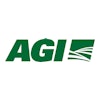The Animal Drug Availability Act of 1996 (ADAA) authorized a new category of animal drugs, veterinary feed directive (VFD) drugs. Prior to ADAA, only two categories of animal feed drugs existed, over-the-counter (OTC) or prescription (Rx) — all animal drugs approved for use were OTC. VFD products, however, sit in the middle between OTC and Rx animal drugs. ADAA says VFD products are not prescriptions under either state or federal law.
History
A coalition formed in 1995 — including the American Feed Industry Association — to develop a VFD process that would provide more veterinarian oversight of therapeutic, antimicrobial animal drug use, and provide a more practical alternative to prescription drugs in feed. This resulted in the VFD section of ADAA, a law that was developed with myriad sections to make more animal health products available to farmers and ranchers by requiring more efficient approval methods at the U.S. Food and Drug Administration (FDA). Although it took some time to finalize the VFD rule, the statute provided sufficient authority for FDA to approve and regulate newly approved VFD drugs and VFD medicated feed. The first product was approved within about 70 days post-enactment of ADAA.
2000年12月8日,FDA发表最后一种规则,佛rmally implement the VFD process. It became effective Jan. 8, 2001. All animal drugs are approved by FDA’s Center for Veterinary Medicine (CVM), which also determines if a drug will be approved as a VFD drug or as an OTC drug.
From 2001 to 2012, the VFD process proceeded untouched; however, FDA, as part of the government’s plan to ensure judicious use of antibiotics in food for animals, proposed amendments to the VFD process in late 2013. AFIA submitted comments citing areas of concern:
The shortage of properly trained veterinarians needed to cover the large, expected increase in approved VFD animal drugs;
Need for a program to integrate new VFD products into the marketplace;
Explanation of how newly created VFD combinations will be addressed in the preamble to the final rule; and
Overall streamlined process to make it more efficient, streamline record-keeping and enhance animal health.
Government initiative
In June, during a White House antibiotic stewardship event, FDA announced the VFD final rules, which ultimately addressed many of the industry’s concerns. However, to AFIA’s surprise, a major point of contention remained: the two-year VFD record-keeping guideline.
The industry believed and FDA initially proposed to decrease the two-year record-keeping requirement to one year, parallel to the one-year record-keeping requirement that appears in the Current Good Manufacturing Practices regulations for medicated feed (Title 21, C.F.R., Part 225). The two-year requirement is challenging as none of the U.S. feed mills are currently utilizing a validated electronic system due to cost, which is recorded under the electronic records and electronic signatures rule (Title 21, C.F.R., Part 11). As a result, each feed mill using medicated feeds is required to file a signed and dated hard copy of each VFD for two years. The lack of electronic submission and hard copy filing paired with the additional 283 newly approved VFDs will compile quite the paperwork pile.
During the White House event, the Obama Administration announced details surrounding its antibiotic stewardship program, stating its plan to eliminate hormone-free products from agency use — which have not previously been part of the antibiotic discussion. It also implied hormone-free products are safer and should be preferred by consumers because the federal government, including our president, use them. The administration’s comments caused a stir in the animal agriculture industry, with AFIA commenting that the memorandum spreads the wrong message to both trading partners and consumers alike.
The VFD process
The final VFD process requires the veterinarian engage the client (i.e., the farmer or rancher) to gain responsibility for making medical judgments about patient’s (i.e., animal) health, have patient knowledge gained from an examination and/or facility visits where the animal resides and provides follow-up evaluation as needed.
It is standard that VFDs are specific to one drug, and three copies of the form must be made — one for the veterinarian, the producer and the feed supplier. The VFD forms can be transmitted via facsimile (fax) or PDF (email) by the veterinarian, and the client (producer), distributor and veterinarian must keep these copies for two years. The current rule requires the feed distributor to maintain the original VFD copy, but the final rule, for no clear reason, changed this to the veterinarian keeping the original copy. This change was not noted in the proposed VFD rule.
VFD by telephone is not permitted; however, new to the process is electronic transmission (e-VFD by email) as long as the sender complies with 21 CFR, Part 11, Electronic Records & Electronic Signatures. As noted earlier, however, electronic VFDs are costly, as they require validation of computer hardware and software. An updated guidance for industry describing the new e-VFD can be found atwww.fda.gov/AnimalVeterinary/GuidanceComplianceEnforcement/GuidanceforIndustry. Comments on this guide were due to FDA by Aug. 3.
Once signed by a veterinarian, a producer can bring the lawfully completed VFD form to the distributor, providing the feed supplier with the original copy of the forms for fulfillment using the specific VFD drug level required on the form and filing. However, after Oct. 1, the veterinarian will maintain the original VFD copy.
第二类药物药物目前变频,require an approved medicated feed mill license (MFML) in order to receive the Type A medicated article. MFMLs are not required for Type B or Type C medicated feeds. Current VFDs animal drugs are all Category II drugs; however, the FDA has said that as the old animal drugs transition to VFD drug status, the previous category status will stay the same. Currently approved animal drugs that are Category I drugs are likely to remain Category I drugs in Jan. 1, 2017, when they become VFD drugs.
Changes and implementation
With the amended rule published, a number of approved drug changes are expected by the implementation deadline, December 2016. Once implemented, it will be illegal to use antibiotics important to human health for production purposes and without veterinary oversight. Animal producers will need to obtain authorization from a licensed veterinarian to use them for prevention, control or treatment of a specifically identified disease. All 26 affected drug sponsors have committed to implementing the changes described in FDA Guidance #213 by the 2016 target date while phasing in veterinarian oversight for the remaining therapeutic drugs.
Summary for producers
If a producer wishes to use former approved production animal drugs after Jan. 1, 2017, the producer must contact a veterinarian who must have a valid veterinarian client patient relationship, complete a valid VFD form for an approved animal drug and provide a copy to the producer for the feed distributor. The producer can use whatever distributor she/he chooses. The producer can have the veterinarian send a fax of the VFD or PDF or use a validated commercial computer system recognized by FDA. Records of the VFD must be maintained by the producer for two years. The completed legal VFD authorizes the producer to use the indicated animal drug for his/her animals once the VFD medicated feed is received.
Summary for veterinarians
If contacted by a producer, a veterinarian may write a VFD in the course of thier practice for animals under thier supervision. The veterinarian may forward that VFD to the feed distributor with required information on the animals and location via fax, PDF or paper copy. Alternatively, the veterinarian may give the VFD to the producer to locate a feed distributor. The veterinarian must retain the original VFD for two years, mark on the VFD if they allow any combinations and also put on the VFD if they do not want substitution of approved generic animal drug for any approved pioneer drug listed on the VFD. The VFD medicated product may also be distributed by the veterinarian if they’ve notified FDA that they intend to distribute VFD feeds and have sent the VFD animal drug supplier an acknowledgement letter, described above.
Summary for feed mills, dealers or distributors
Feed distributors, including feed mills and dealers, may receive VFD completed legal forms and dispense the VFD medicated feed but may be required to hold a medicated feed mill license in order to purchase any Category II, Type A premixes if required by the VFD animal drug rule. The feed distributor must notify FDA one time of the intent to distribute VFD products and send an acknowledgement letter to the supplier of the VFD animal drugs as described above. Once any valid, legal VFD is received from a producer, the feed distributor is authorized to supply/deliver to the producer the product indicated on the VFD, including any authorized combinations containing a VFD animal drug and may substitute a pioneer for a generic drug and vice versa if the veterinarian does not object to such substitution on the VFD form. The feed mill must maintain the VFD form for two years after distribution, and the form can be stored in any format by which it was delivered. Manufacturing records related to the VFD must be stored for one year following distribution of the VFD feed in accordance with the CGMP record-keeping requirements. VFD forms and manufacturing records must be available for review by any authorized FDA/state investigator.
The VFD process has been designed to ensure animal drugs are used safely and in accordance with modern science and federal rules. It is the responsibility of all points of contact in the process — feed manufacturers, dealers, retailers, producers and veterinarians — to guarantee adequate control of VFD products.
It is of the utmost importance to use updated forms, provide accurate information, follow proper mixing instructions and maintain records for the specified time frames. The inability to stay updated in these mandatory steps can result in regulatory sanctions and further product restrictions by FDA. In some cases, FDA may fail to approve additional VFD products.
For additional information, FDA has published a Guidance for Industry Veterinary Feed Directive Regulation Questions and Answers document. Richard Sellers can be contacted atrsellers@afia.org.





















